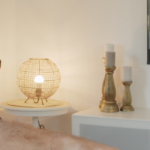MED-EL
Published Aug 31, 2022
Rehab at Home for Adults: Understanding Conversation in Small Groups

Welcome back to our Rehab at Home for Adults series where you can learn how to reach everyday listening goals and improve your hearing. Today’s goal is about understanding conversation in small groups.
Everyday Listening Goal 5: To Understand Conversation in Small Groups
Following conversations in small groups (3 to 5 people) can be challenging when the conversation moves quickly, and if more than one person speaks at once. Let people know that you have hearing loss and ask them to slow the conversation down.
In this video, you will meet Mary-Jane and her husband Nick. Mary-Jane’s hearing loss in one ear was caused by Meniere’s disease. She made the decision to get a cochlear implant when her ENT surgeon explained that her other ear could be affected in the future leaving her totally deaf. Mary-Jane is training her brain to understand speech using her cochlear implant by doing auditory training direct to her implant. Watch how she does it.
Tips for Conversations in Small Groups
Here are some additional tips to help you achieve the goal of understanding conversation in small groups (3 to 5 people).
To Get Started
- Invite 2 or 3 friends over to your home and let them know you are practicing listening in small groups.
- Reduce background noise by turning off the TV and radio or any other noises.
- Decide on a familiar topic and ask one person to speak at a time.
- Use a variety of questions to check you have understood correctly.
As You Progress
- Invite a small group (3–5) of friends or family over to your home and let them know that you are practicing listening in small groups.
- Reduce background noise and have a conversation about a topic unknown to you.
- Play a card game or a board game together.
Once You’re Almost There
- Meet a group of friends or family in a public place (e.g. café or restaurant).
- Let them know that you are practicing listening in small groups.
- Ask for a table away from any noise sources (e.g. the kitchen).
- Choose a seat that allows you to see everyone.
- Begin with topics you have decided on, then try unknown topics.
In conversations, turning to face the person talking is helpful so you can use speech reading cues. Download our Sound Localization brochure for additional tips and information to help you build this skill.
MED-EL
Was this article helpful?
Thanks for your feedback.
Sign up for newsletter below for more.
Thanks for your feedback.
Please leave your message below.
Thanks for your message. We will reply as soon as possible.
Send us a message
Field is required
John Doe
Field is required
name@mail.com
Field is required
What do you think?
The content on this website is for general informational purposes only and should not be taken as medical advice. Please contact your doctor or hearing specialist to learn what type of hearing solution is suitable for your specific needs. Not all products, features, or indications shown are approved in all countries.
MED-EL


